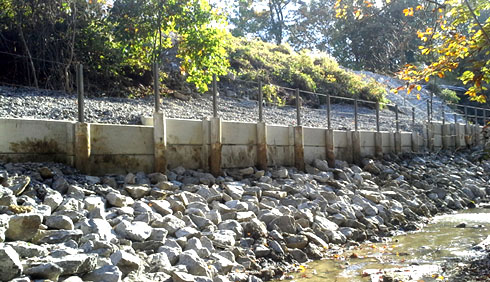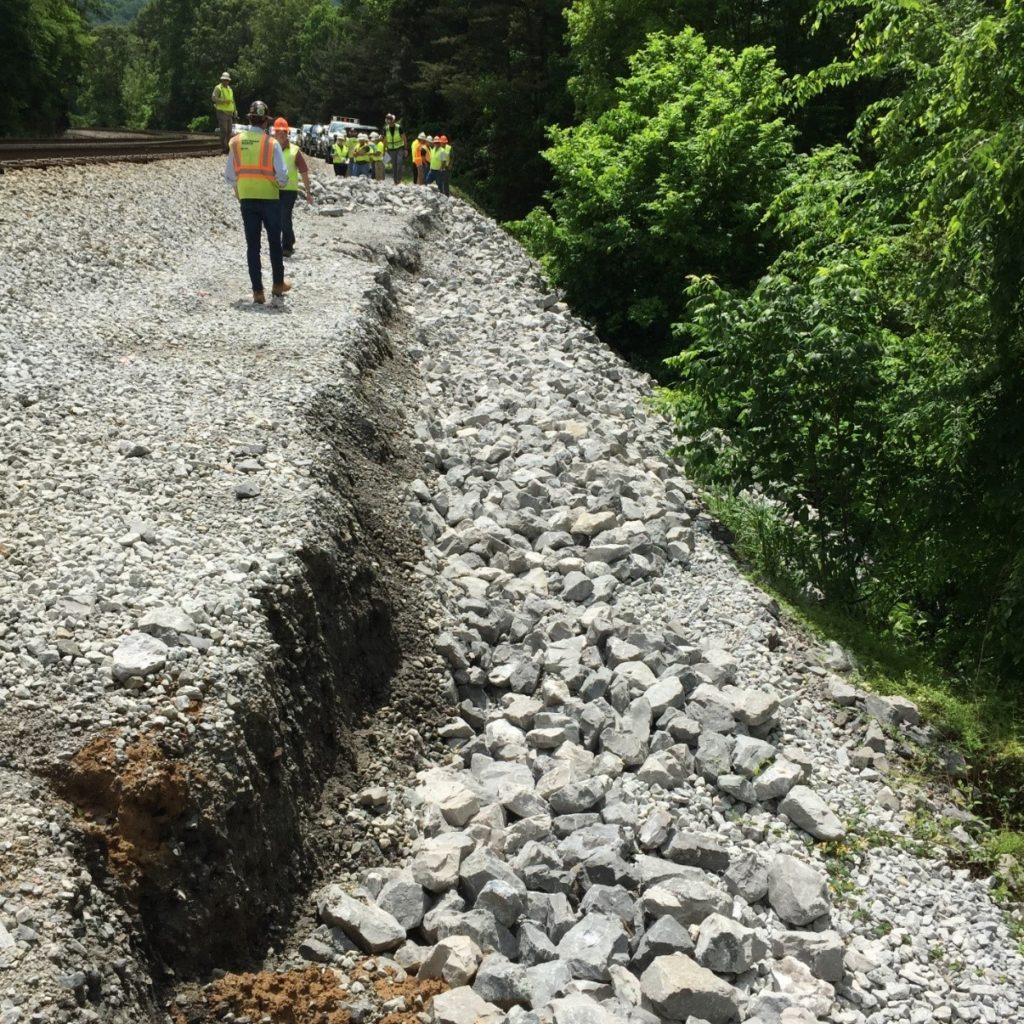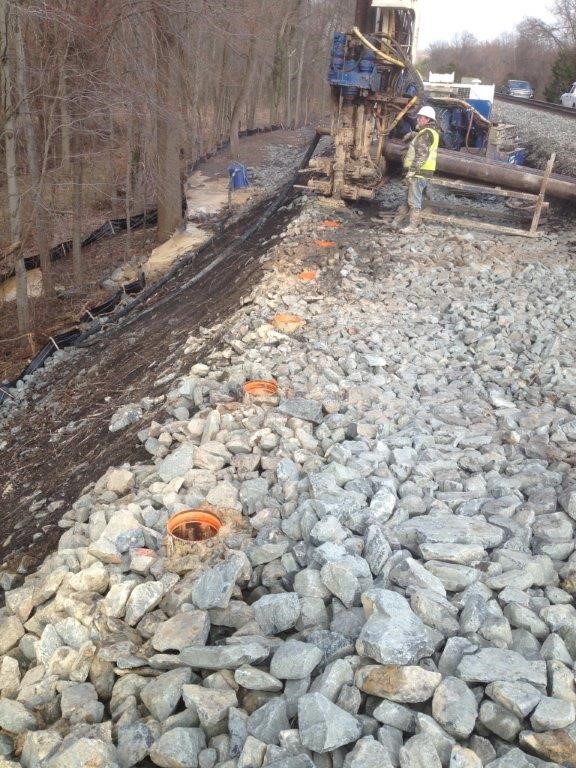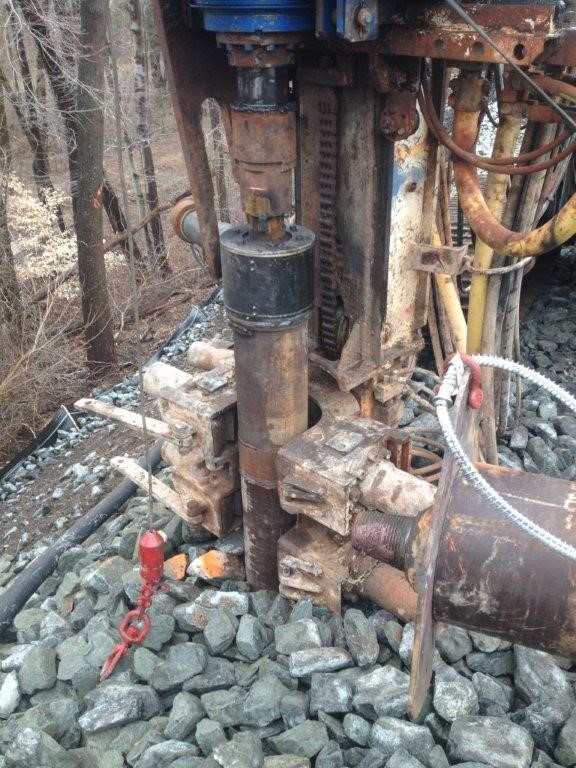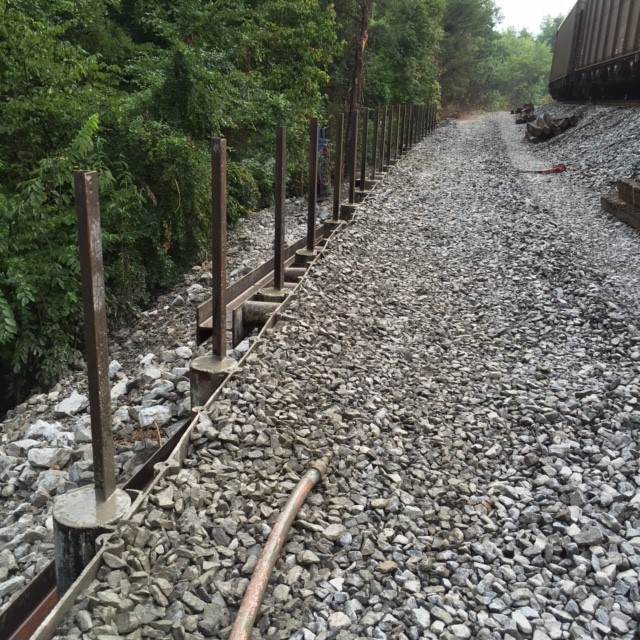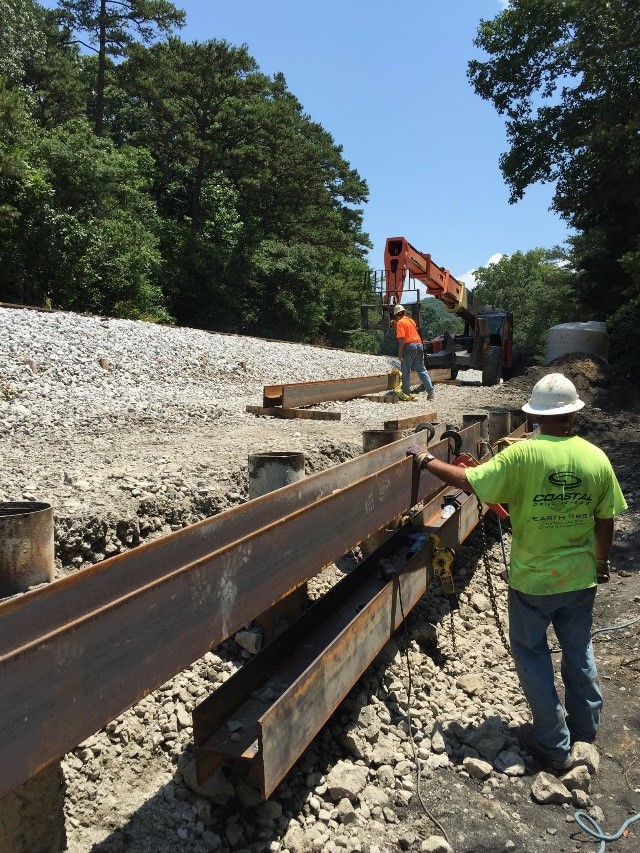The CDE advantage with Shoring Pipe Pile Walls:
- Low noise and vibration
- Restricted access / low headroom
- Experienced field and office staff
- Small and large projects coast to coast
- Minimal disturbance to surrounding area
- Challenging access alongside hillside slopes
Pipe Pile wall applications can be as simple as new excavation in need of temporary support for construction access or stabilization of adjacent buildings.
Another common use of pipe pile walls is to support existing slopes that are exhibiting signs of stress or have begun to fail along roadways or railroads. The mobility of CDE’s equipment allows easy access to the area of concern with minimal disturbance to the surrounding area. Railroads are particularly sensitive to any potential disturbance to the rail bed and are a strong advocate of these techniques. Additionally, if tiebacks are required, the same rig can install the pipe piles and tieback anchors.
Our objective is to clearly identify the risks and challenges and the appropriate solution that must be engaged for success on pipe pile projects in challenging site conditions. A few examples of conditions that may require the installation of pipe piles are listed below:
- Working near active railroad tracks
- Working along active roadways with minimal lane closures
- Support of side slopes along railroads in remote locations
- Deep excavations requiring combination of pipe piles and tieback anchors
- Small, tight access sites such as along a roadway for a replacement bridge
- Interior excavation of existing building with low overhead, which is some cases diesel power equipment are not allowed due to exhaust fumes
(function($){
$("#justified_gallery_7wANAA").justifiedGallery({
sizeRangeSuffixes : {
'lt100': '',
'lt240': '',
'lt320': '',
'lt500': '',
'lt640': '',
'lt1024': ''
},rowHeight: 300,
margins: 10,
lastRow: "justify",
fixedHeight: false,
captions: false,
captionsColor: "#000000",
captionsOpacity: 0.7,
randomize: false,
maxRowHeight: 0,
rel: "7wANAA",
target: null,
refreshTime: 250,
cssAnimation: true,
captionsAnimationDuration: 500,
imagesAnimationDuration: 300,
captionsVisibleOpacity: 0.7,
class: "",
})
.on('jg.complete', function(){
});
var galleries = [];
var gallery = $("#justified_gallery_7wANAA");
$(window).scroll(function() {
if ( galleries.length >= 1 ) {
var scroll_top = $(window).scrollTop();
var scroll_bottom = scroll_top + $(window).height();
var gallery_top = $(gallery).offset().top;
var gallery_height = $(gallery).innerHeight();
var gallery_bottom = gallery_top + gallery_height;
if( gallery_bottom <= scroll_bottom ) {
var images = galleries.splice(0,1);
var image_html = $("#load_more_holder_7wANAA").html(images).text();
$(gallery).append(image_html);
$(gallery).justifiedGallery('norewind');
}
}
}); })(jQuery);
#justified_gallery_7wANAA .sgg-caption {
background: rgb(0,0,0);
background: rgba(0,0,0,0.7);
color: #ffffff;
font-size: 1em;
font-weight: 400;
font-family: Helvetica, Arial, sans-serif;
}
#load_more_7wANAA {
background: #444444;
color: #ffffff;
}

